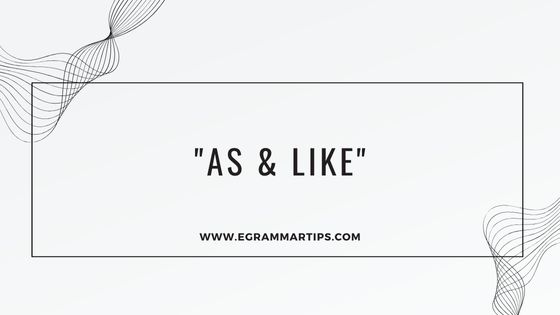

“As” and “like” are both used to make comparisons in English, but they have different functions and nuances.
1. “As”
Function:
•Used to describe a role or function.
•Also used in comparisons to indicate equality.
Examples:
Role/Function:
“She works as a teacher.” (She is a teacher.)
Comparison (equality): “He is as tall as his brother.” (They have the same height.)
Usage:
As + Subject + Verb:
“He acts as if he knows everything.
“As + Noun:
“She used as a reference.”
2. “Like”
Function:
Used to show similarity between things.
Examples:”She sings like a professional.” (She sings in a similar way to a professional.)
“It feels like winter.” (It feels similar to winter.)
Usage:
Like + Noun/Pronoun:
“He runs like the wind.
“Like + Clause (informally):
“It looks like it might rain.”
Key Differences:
Formality: “As” is more formal, especially in clauses (“As I mentioned…”), while “like” is more casual.
Structure: “As” is followed by a subject and verb in formal comparisons, while “like” is followed by a noun or pronoun.
Example Comparison:
As: “He works as a doctor.” (He is a doctor.)
Like: “He works like a doctor.” (He works similarly to a doctor, but isn’t one.)